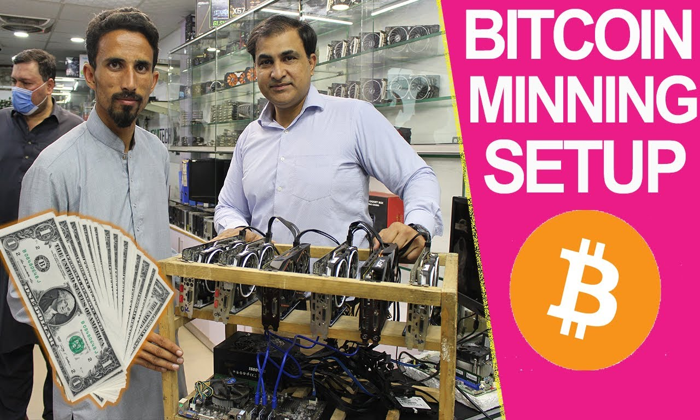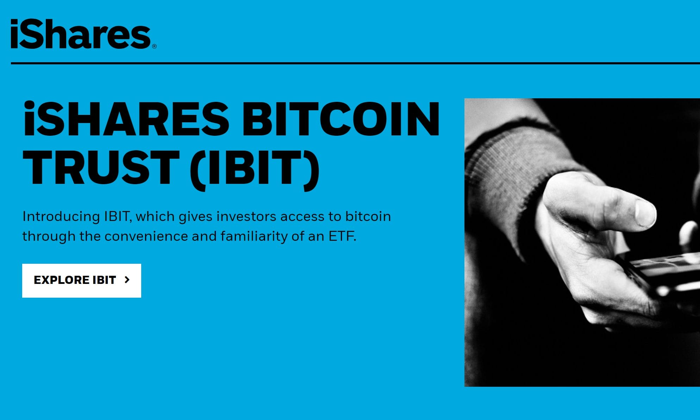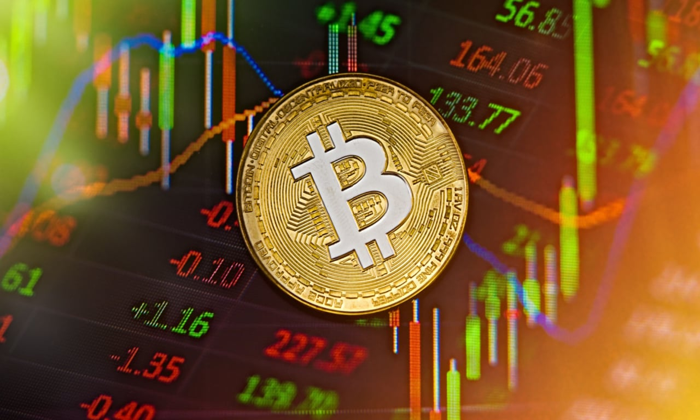In the ever-evolving landscape of digital assets, the discussion around NFTs as long-term wealth has gained significant traction, particularly following Raoul Pal’s provocative statements. As the CEO of Real Vision, Pal posits that NFTs could be the “single best long-term store of wealth,” a claim that has spurred a vibrant debate within the NFT market. This perspective emphasizes the potential of NFT investment not just as a fleeting trend but as a viable strategy for wealth accumulation in a world increasingly defined by currency debasement and technological advancements. Supporters of this view argue that owning digital assets like NFTs represents an innovative approach to diversifying one’s portfolio, especially as traditional investment avenues evolve. However, skepticism looms large, suggesting that the NFT market debate is far from settled, with opinions sharply divided over its future viability and value.
Exploring the concept of NFTs as sustainable wealth, many are turning their attention towards alternative digital collectibles that promise longevity in investment potential. This asset class, often seen as a modern iteration of traditional art and heirlooms, represents a shift in how wealth can be perceived and accumulated. Enthusiasts are advocating for the recognition of digital tokens not merely as speculative products but as legitimate investments that could redefine ownership in the digital age. The ongoing discourse surrounding these assets highlights a broader trend where art, culture, and technology intersect, offering unique opportunities for savvy investors. As the conversation develops, the implications for how we view wealth in our increasingly digital world are profound, making the assessment of NFTs crucial for those looking towards the future.
The Growing Debate Over NFTs as Long-Term Wealth
The assertion by Raoul Pal that NFTs are the ‘best long-term store of wealth’ has ignited vigorous discussions within the investor community. This debate revolves around the potential of non-fungible tokens to serve as digital assets that can retain and appreciate in value over time. Supporters of this view argue that the unique characteristics of NFTs—namely, their ability to certify ownership and provenance—position them as a revolutionary form of digital property. Unlike traditional investments, NFTs encapsulate a piece of culture, art, or history, making them potentially more valuable as they gain recognition in the digital economy.
Conversely, skeptics caution against viewing NFTs as a stable store of wealth. The NFT market’s volatility and significant drops in value since its exuberant highs in 2021 lead many investors to question the long-term viability of these digital assets. Critics point out that while NFTs have made waves in collecting circles, their perceived value can fluctuate widely, with some assets quickly becoming illiquid. This stark divergence in outlook emphasizes the ongoing uncertainty surrounding NFTs and their role in future wealth management strategies.
Pal’s Perspective on Digital Assets and Wealth Management
Raoul Pal’s perspective puts a spotlight on how digital assets are reshaping traditional wealth management practices. By suggesting that NFTs are vital components of a diversified portfolio, Pal aligns with a broader trend where investors are increasingly reallocating their assets into the crypto space. Given the historical context of currency devaluation, he argues that possessing a mix of cryptocurrencies and NFTs could safeguard wealth against traditional market fluctuations. As institutions adopt Bitcoin and explore Web3 technologies, there’s a growing belief that digital assets, including NFTs, will play a pivotal role in future investment landscapes.
His commentary prompts investors to rethink what constitutes a valuable asset in today’s digital age. Pal’s recommendation to acquire well-known NFT collections like CryptoPunks reflects a sound strategy for new investors looking to enter the NFT market. These assets not only signify ownership but also embed cultural value, potentially making them superior long-term investments compared to more traditional assets. However, this approach is not without risks; it necessitates a keen understanding of the underlying market dynamics and the significance of provenance within the NFT space.
Crypto Store of Wealth: NFTs vs Traditional Investments
The discussion of NFTs as a ‘crypto store of wealth’ inevitably leads to comparisons with traditional investment vehicles such as stocks and real estate. While traditional assets have established histories and predictable performance metrics, NFTs introduce a layer of complexity and uncertainty. Their prices can be influenced by trends in art, technology, and even social media, making them more speculative compared to investing in tangible assets. Investors must adopt a forward-thinking mindset to navigate these complexities while recognizing that the true long-term value of NFTs is yet to be fully realized.
Those advocating for the inclusion of NFTs in investment portfolios highlight the potential for outsized returns that can accompany early adoption in emerging asset classes. They see NFTs as not just collectibles but as the next frontier of digital wealth, especially as the digital landscape continues to evolve. As more individuals and institutions recognize the significance of these digital assets, the potential to view them as a viable store of wealth becomes increasingly plausible. Nevertheless, the market must mature, with a clearer understanding of value drivers and practicalities governing NFT investments.
Impact of the NFT Market Debate on Investor Sentiment
The NFT market debate, spurred by Raoul Pal’s bold statement, has evoked a mixed bag of investor sentiments. On one hand, proponents who acknowledge Pal’s vision highlight the innovative nature of NFTs and their capacity to change ownership paradigms. They argue that as cultural assets, NFTs could surpass traditional collectibles in value over time, particularly as blockchain technology advances and adoption becomes more mainstream. This forward-looking perspective promotes optimism about the future of wealth stored in digital assets, encouraging cautious experimentation within the NFT market.
On the flip side, the criticisms directed at NFTs reflect a significant skepticism that permeates through the investment community. Many warn of the rampant speculation that once characterized the market, cautioning investors about its unproven long-term value. As discussions continue to evolve, it is crucial for potential investors to remain vigilant and conduct thorough research to differentiate between speculative hype and genuinely valuable assets. Ultimately, the outcome of this debate will shape how NFTs are perceived and integrated into broader investment strategies moving forward.
The Role of Institutional Investors in the NFT Landscape
Institutional interest in NFTs is rapidly growing as firms begin to explore the potential applications of digital assets. This trend signals a shift towards recognizing NFTs not just as frivolous collectibles but as serious investment opportunities that could reshape financial landscapes. Institutions are increasingly looking at NFTs for diversification strategies, considering their potential to complement existing portfolios with unique and potentially high-yield assets. As more institutions dive into this space, it may legitimize NFTs further, attracting a wider audience of traditional investors.
However, the influence of institutional players also brings about various implications for the NFT market. With larger capital comes increased scrutiny and the potential for market stabilization, which could elevate the standards for what constitutes a valuable NFT. This dynamic may lead to a healthier market, but it could also narrow the focus on established brands and artists, overshadowing emerging creators and innovative projects. Balancing institutional involvement while fostering a diverse NFT community will be essential for the ecosystem’s integrity and growth.
Understanding the Cultural Significance of NFTs
NFTs transcend mere digital ownership; they encapsulate cultural significance that resonates with collectors and investors alike. Each NFT has its own story, often tied to artistic expression, historical moments, or community engagement, which can imbue a unique level of value that traditional investments lack. This cultural layer of NFTs presents an exciting opportunity for collectors who appreciate not just the financial aspect but the narrative and provenance that accompany digital artworks and assets.
As the world becomes increasingly digital, the cultural dimension of NFTs is likely to grow, paving the way for new forms of artistic expression and engagement within communities. By supporting artists and creators through NFT platforms, collectors partake in a broader cultural movement that champions originality and creativity in the digital realm. This intertwining of culture and commerce could radically reshape how value is assigned in art, suggesting that NFTs may indeed represent the future of wealth storage by amalgamating aesthetic appreciation and economic investment.
Navigating the NFT Market: Risks and Rewards
Investing in NFTs presents an intriguing landscape of both risks and rewards that requires careful navigation. The remarkable price variations experienced within the market can yield substantial returns, but they also pose the risk of significant losses. Potential investors must grasp the volatility akin to traditional financial markets while being mindful of the unique characteristics of NFTs, such as their lack of liquidity and fluctuating demand. Strategies that blend fundamental analysis with a strong understanding of the cultural and social aspects of NFTs can help mitigate some of these risks.
Moreover, as the NFT market continues to evolve, investors should stay informed about broader economic trends and their potential impact on digital asset valuation. Keeping abreast of factors such as technological advancements, regulatory developments, and changing consumer preferences can provide critical insights into the market’s direction. Assiduous investors can leverage these factors to identify opportune moments for entry and exit, ensuring they maximize their returns while playing an active role in the dynamic world of NFTs.
The Future of NFTs in Wealth Preservation Strategies
As discussions around Raoul Pal’s assertion unfold, the future of NFTs in wealth preservation strategies will likely continue to be an evolving narrative. With increasing digitalization and a societal shift towards valuing digital ownership, NFTs may cement their place as a legitimate component of diversified investment portfolios. The potential for NFTs to serve as unique, decentralized assets highlights alternative pathways for wealth storage, positioning them alongside traditional assets like real estate and stocks.
Nevertheless, it is essential for investors to approach NFTs with a balanced perspective, recognizing potential market fluctuations and the speculative nature that characterizes much of the current NFT landscape. Education and research will be pivotal as investors evaluate which NFTs to include in their strategies. Balancing the innovative potential of NFTs with due diligence can lead to thoughtful investment approaches that capitalize on the transformative potential of these digital assets in wealth preservation.
Frequently Asked Questions
Why does Raoul Pal consider NFTs the best long-term store of wealth?
Raoul Pal, a prominent figure in macro investing, advocates for NFTs as the best long-term store of wealth due to their unique value as digital assets intertwined with cultural significance and ownership. He believes that as technology evolves, NFTs will become increasingly valuable, representing forms of property ownership that have not yet reached their peak in value. This perspective is rooted in the broader context of currency debasement and the historical shift toward digital ownership.
What factors contribute to the debate around NFTs as a long-term investment?
The debate surrounding NFTs as a long-term investment is fueled by contrasting opinions on their intrinsic value and market volatility. Proponents, like Raoul Pal, argue that NFTs embody digital assets that will ultimately appreciate as societal and technological trends evolve. Critics, however, point to the significant decline in NFT market activity post-2021, labeling them as speculative instruments with an uncertain future. Thus, the discussion includes both the potential for appreciation and the risks associated with a fluctuating market.
Are NFTs a sustainable way to build long-term wealth in the digital age?
NFTs can potentially be a sustainable way to build long-term wealth, especially for those who view them as unique digital assets that represent ownership of culturally significant works. According to Raoul Pal and other advocates, as the landscape of asset ownership shifts towards digital forms, collectibles like NFTs may see increasing demand. However, potential investors should carefully analyze their value and market trends, acknowledging that the sector remains highly speculative.
How does the NFT market situation affect its viability as a long-term investment?
The current state of the NFT market plays a significant role in its viability as a long-term investment. After reaching speculative highs in 2021, the market has experienced a decline, leading some to question its long-term value. Raoul Pal’s belief in NFTs as the best long-term store of wealth is countered by critics who view the current liquidity issues as a sign of overvaluation. Therefore, anyone considering NFTs for investment should closely monitor market trends and public sentiment.
What role do cultural provenance and uniqueness play in the long-term value of NFTs?
Cultural provenance and uniqueness are essential factors in determining the long-term value of NFTs. Many advocates, including Raoul Pal, assert that NFTs with significant artistic or cultural value have the potential to appreciate over time, much like traditional art. These elements contribute to their desirability as digital assets and advancements in technology are expected to further enhance their importance in the future of wealth storage.
What should investors consider before investing in NFTs as a form of wealth?
Before investing in NFTs, potential investors should consider several factors: the unique value of each NFT, its cultural significance, market trends, and the liquidity of the asset. Raoul Pal’s views highlight the importance of understanding NFTs not just as collectibles, but as forms of digital ownership. Additionally, it’s wise to stay informed about market conditions, especially given the diverse opinions surrounding the NFT sector’s sustainability as a long-term investment.
Is it true that NFTs might never be this cheap again, as suggested by Raoul Pal?
Raoul Pal’s assertion that NFTs might never be this cheap again reflects his belief in their potential future value based on technological and macroeconomic trends. He argues that as digital ownership becomes more mainstream, the current prices may be undervalued. However, this is subject to market fluctuations and investor sentiment, meaning potential buyers should conduct thorough research before committing to NFTs.
What is the significance of CryptoPunks in the NFT investment landscape?
CryptoPunks hold a significant place in the NFT investment landscape as one of the earliest and most recognized collections on the Ethereum blockchain. Their historical importance and cultural cachet have contributed to their status and increasing value within the digital asset market. Raoul Pal suggests that owning a CryptoPunk could serve as a suitable starting point for NFT investment, reflecting its potential as a long-term store of wealth.
| Key Point | Details |
|---|---|
| Raoul Pal’s Assertion | Pal claims NFTs are the ‘single best long-term store of wealth’, driven by currency debasement and technology trends. |
| Mixed Reactions | Pal’s statement received both support and criticism within the digital asset community. |
| Support for NFTs | Supporters believe NFTs represent undervalued digital property linked to cultural value. |
| Criticism of NFTs | Critics argue NFTs are significantly below previous market peaks and may be overhyped and illiquid. |
| Example of Support | Influencers are considering increasing their NFT investments, with suggestions to buy iconic NFTs like CryptoPunks. |
Summary
NFTs as long-term wealth are a controversial yet increasingly discussed topic in the financial community. Raoul Pal’s bold statement positions NFTs at the forefront of innovative asset ownership amid growing currency concerns. While some investors see immense potential in NFTs as digital assets reflecting cultural significance, skepticism remains due to the volatile nature of the market and current lower valuations compared to previous highs. The ongoing debate highlights the evolving landscape of digital wealth preservation, encouraging both supporters and critics to reconsider their positions on NFTs.
As the conversation around NFTs as long-term wealth gains momentum, industry critics and proponents are passionately debating their viability as a stable investment. Raoul Pal, CEO of Real Vision, recently sparked controversy by championing NFTs as the “single best long-term store of wealth,” highlighting their potential to outperform traditional assets in a changing economic landscape. This bold claim comes amidst mounting evidence that digital assets, including NFTs, could reshape investment strategies in light of currency debasement and technological advancements. While some view NFTs and NFT investment as speculative and inflated, others, backed by Pal’s insights, believe they represent an essential component of future wealth-building. The ongoing NFT market debate showcases a unique intersection of art and finance that could redefine asset ownership for generations to come.
When discussing non-fungible tokens, or digital collectibles, the narrative often shifts toward their role in establishing enduring wealth. Many investors are observing the rise of these unique digital assets as viable alternatives to conventional stores of value, particularly in a world experiencing rapid currency devaluation. The assertion made by financial thought leaders like Raoul Pal points to the increasing necessity for diversification within investment portfolios, making the case for digital commodities as a reliable future asset. The ongoing discourse around the NFT phenomenon raises questions about market dynamics and the sustainability of these assets long-term. As the landscape evolves, the exploration of how cultural significance and ownership intertwine with technological progress cannot be overlooked.















